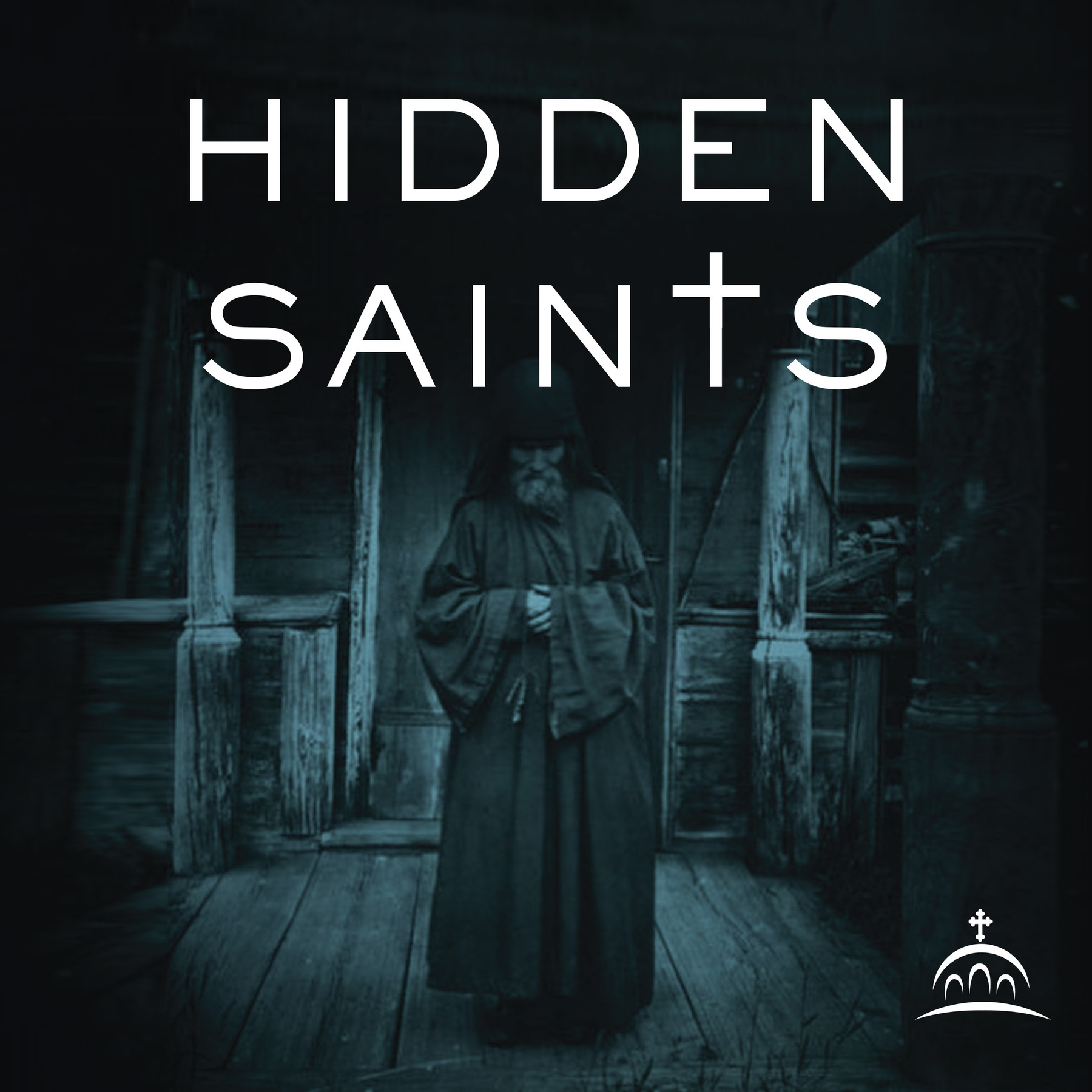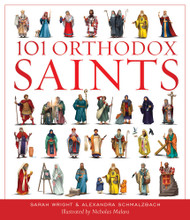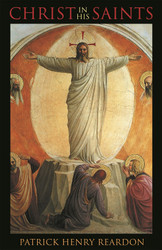
Saint of the Day
Daily Orthodox Saints
The Saint of the Day briefly tells the story of one of our venerable Saints we are commemorating for each day. It is heard eight times daily Monday—Friday, and is also available as a podcast. Our reader is a professional actor and an ordained Deacon in the Orthodox Church, Dn. Jerome Atherholt.
Support podcasts like this and more!
Donate Now
Sunday, December 14, 2025
Holy Martyrs Thyrsus, Leucis and Callinicus (250) - December 14th
These martyrs contested in Asia Minor during the reign of Decius. Thyrsus and Leucis were executed after horrible torture for confessing themselves as Christians and rebuking the Governor for his slaughter of their brethren. Callinicus was a pagan priest, converted by witnessing the martyrdom and miracles of St Thyrsus; he was beheaded.
Saturday, December 13, 2025
Martyrs Eustratius, Auxentius, Eugene, Mardarius, and Orestes at Sebaste - December 13th
"These five courageous men shone like five resplendent stars in the dark days of the anti-Christian Emperors Diocletian and Maximian. St Eustratius was a Roman general in the city of Satalios, Eugene was one of his comrades in arms and Orestes likewise a respected soldier. Auxentius was a priest and Mardarius a simple citizen who came, like Eustratius, from the town of Aravraca. The imperial governors, Lysias and Agricola, tortured Auxentius first as he was a priest. Beholding the innocent suffering of the Christians, Eustratius presented himself before Lycias and declared that he also was a Christian. While Eustratius was being tortured, Eugene stood up before the judge and cried out: 'I am a Christian too, Lycias!' When they were driving Eustratius and the other martyrs through the town, Mardarius saw them from the roof of his house, and he took leave of his wife and two frail daughters and hastened after them, shouting into the faces of their tormentors: 'I am a Christian too, like the Lord Eustratius!' Orestes was a young and handsome soldier, who stood head and shoulders above all the other soldiers. One day, when he was at target practice in Lycias's presence, the Cross he was wearing fell from his breast, and Lycias realised that he was a Christian. Orestes openly confessed his faith, and was martyred with the others. Auxentius was beheaded, Eugene and Mardarius died under torture, Orestes was exposed on a red-hot iron grid and Eustratius died in a flaming furnace. St Blaise (see Feb. 11th) gave Communion to St Eustratius in prison before his death. Their relics were later taken to Constantinople, and are preserved in the church dedicated to them — The Holy Five Companions. They were seen alive in that church, and St Orestes appeared to St Dimitri of Rostov (see Oct. 28th). A beautiful prayer by St Eustratius is extant, which is read at the Midnight Service on Saturdays: 'I glorify Thy majesty, 0 Lord for Thou hast regarded my lowliness and hast not shut me up in the hands of my enemies, but hast saved my soul from want...'. " (Prologue)
Friday, December 12, 2025
St Finian of Clonard (549) - December 12th
"St Finian, known as the 'Tutor of the Saints of Ireland,' stands with St Enda of Aran at the head of the patriarchs of Irish monasticism. He showed great zeal and piety for God from his youth. He had already founded three churches before he set off for Wales to study at the feet of St Cadoc at Llancarfan (September 25, †577). In Llancarfan he became close friends with St Gildas (January 29, †570), another of St Cadoc's disciples. Upon his return to Ireland, he founded the great Monastery of Clonard during the same year the great St Enda (March 21, †530) reposed in Aran. A multitude of illustrious and holy men studied under St Finian, including the famous 'Twelve Apostles of Ireland.' St Finian founded many other monasteries during his lifetime, including the famous island monastery of Skellig Michael off the southwest coast of Ireland." (Saint Herman Calendar 2003)
Thursday, December 11, 2025
Our Venerable Father Daniel the Stylite (490) - December 11th
He was from Samosata in Mesopotamia, and became a monk at the age of twelve. As a young monk he visited St Symeon the Stylite (September 1) to receive his blessing. Years later he moved to the neighborhood of Constantinople at the request of the holy Patriarch Anatolius (July 3), whom he had healed of a deadly ailment through his prayers. For a time Daniel lived in the church of the Archangel Michael at Anaplus, but nine years later St Symeon the Stylite appeared to him in a vision and told him to imitate Symeon's ascesis of living on a pillar. For the remaining thirty-three years of his life the Saint did just that. He stood immovably in prayer regardless of the weather: once after a storm his disciples found him standing covered with ice. He was much loved by several Emperors (including Leo the Great), who sought him out for counsel. He reposed at the age of eighty-four, having lived through the reigns of three Emperors.
Wednesday, December 10, 2025
Holy Martyrs Menas, Hermogenes and Eugraphus (235) - December 10th
Menas was an Athenian, a courtier of the Emperor Maximinus, and a secret Christian. Once there was an outbreak of civil unrest in Alexandria, brought about by various political factions, and by the increasing success of Christian missionaries in turning the Alexandrian people from the idols. The Emperor sent Menas to reconcile the parties and settle the dispute. On his arrival, Menas quickly resolved the political troubles and restored peace to the city; but instead of putting down Christianity as the Emperor had desired, he did everything in his power to protect the Christians and encourage the spread of the Gospel. When word of this came to the Emperor, he sent another trusted courtier, Hermogenes, to re-establish Imperial authority and to execute Menas if he would not renounce Christ. Hermogenes followed these orders scrupulously: he subjected the godly Menas to various horrid tortures in the public arena. But Menas was miraculously preserved through them all, and when he finally appeared in the arena, flanked by two shining Angels, Hermogenes repented and confessed Christ. He in turn became such a fervent advocate for the Gospel that he was soon made a Bishop (!). Finally the Emperor decided that the only solution was to come to Alexandria himself. There he had both Menas and Hermogenes cruelly tortured to death in secret, lest they perform any public miracles; but when the Emperor presented himself before the people at the arena the following day, the two Saints, miraculously preserved, appeared there also, causing the people to cry out "Christ is the only true God!" At the sight, Menas' scribe Eugraphus declared himself a Christian, leaped into the arena and publicly demanded the honor of dying with them. All three were beheaded. Their precious relics were later taken to Constantinople, where they worked many miracles.
 Dn. Jerome Atherholt
Dn. Jerome Atherholt






